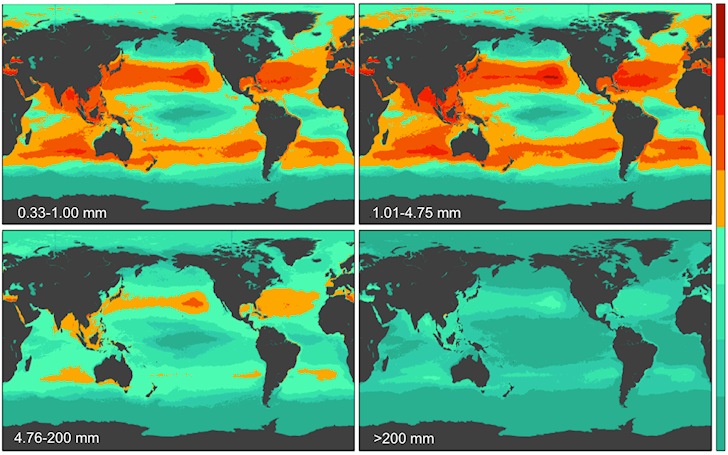A study by 5 Gyres reveals that there are 270,000 metric tonnes of plastics floating in all of the world's oceans.
Plastics are ruling our seas and oceans. A team of researchers led by Marcus Eriksen, co-founder of 5 Gyres, used an oceanographic model to calculate a total of 5.25 trillion particles weighing 268,940 tons floating over salted water.
5 Gyres also compared plastic pollution levels between oceans and across four size classes: 0.33–1.00 mm (small microplastics), 1.01–4.75 mm (large microplastics), 4.76–200 mm (mesoplastic), and >200 mm (macroplastic).
"Our estimates suggest that the two Northern Hemisphere ocean regions contain 55.6% of particles and 56.8% of plastic mass compared to the Southern Hemisphere, with the North Pacific containing 37.9% and 35.8% by particle count and mass, respectively," notes Eriksen.
"In the Southern Hemisphere, the Indian Ocean appears to have a greater particle count and weight than the South Atlantic and South Pacific oceans combined."
The data showed the weight of plastic pollution globally was estimated to comprise 75.4% macroplastic, 11.4% mesoplastic, and 10.6% and 2.6% in the two microplastic size classes, respectively. As a result, a minimum of 233,400 tons of larger plastic items are afloat in the world's oceans compared to 35,540 tons of microplastics.
